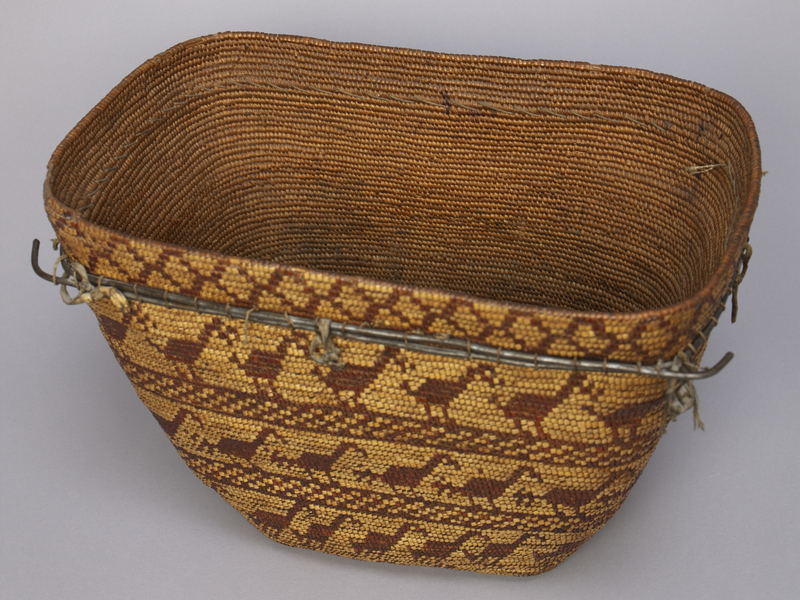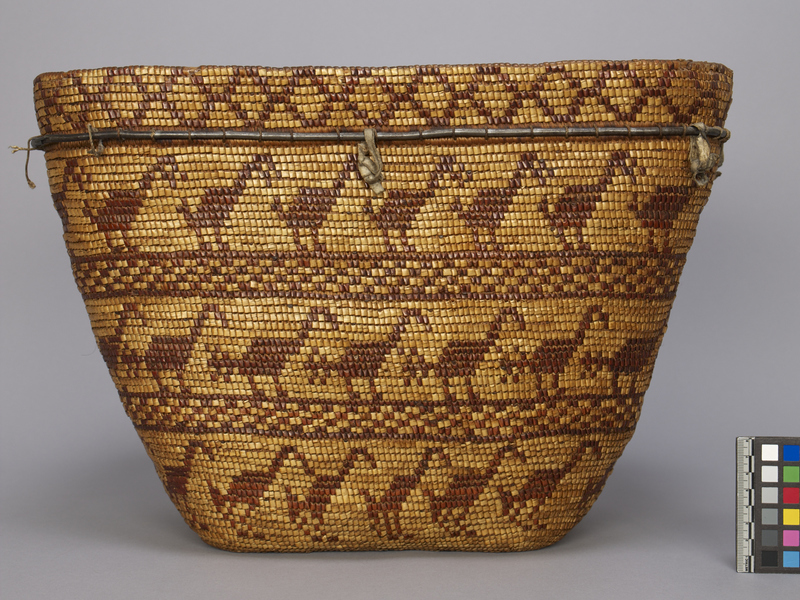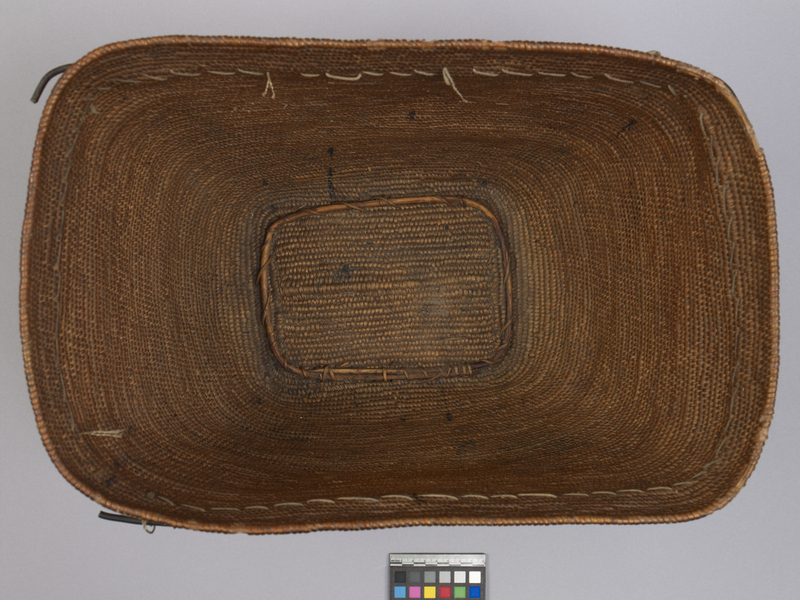Basket Item Number: 3207/7 from the MOA: University of British Columbia



Description
Burden basket. Rectangular with three separated rows of animal designs covering all four sides. The figures are reddish-brown bark, with a lighter (yellowish) grass as background. The upper outside edge is reinforced with a rectangular loop of thick metal (telegraph) wire, held on with hide and fibre loops. The inside base is reinforced with a rectangular loop of root, bent at three corners.
History Of Use
Burden baskets were often used for berry collecting. Coiled baskets in a range of sizes, embellished with distinctive patterns and motifs of animals and humans, have long been made and used by Tsilhqot’in people. Spruce roots are usually preferred over cedar roots as the foundation for these strong and functional containers, which are often made in this flared, burden-basket form. Unique to Tsilhqot’in baskets is the strengthening rib of wood or other material tied on the outside, below the rim, to provide an attachment for a tumpline. On this basket, the inventive maker used pieces of telegraph wire left over from the Yukon Telegraph Line -- a project that was started by Americans in the 1860s and abandoned when the British succeeded in laying the Trans-Atlantic cable.
Narrative
Purchased by the donor from a Vancouver antique store in the 1970s.
Specific Techniques
Made of coils of split and bundled spruce tree roots, stitched together by long, fine strands of spruce root. Beginning at the base of the basket, the weaver gradually builds up the form out of a continuous coil, stitching the upper layer to the coil below. Each stitch splits the one directly below as the root is drawn through the coil. At the same time, the weaver folds or imbricates strands of grass and bark into each stitch on the outside of the basket, creating dark patterns on a light background.
Iconographic Meaning
The depiction of animals and other designs on baskets often resemble pictographs and petroglyphs found in Tsilhqot’in territory [Linda Smith, 2019]. A group of elders said the animal on the basket represents grouse [2020].
Item History
- Made in British Columbia, Canada before 1900
- Collected during 1975
- Owned by Sharon J. Proctor before November 9, 2016
- Received from Sharon J. Proctor (Donor) on November 9, 2016
What
- Name
- Basket
- Identification Number
- 3207/7
- Type of Item
- basket
- Material
- spruce root, water birch bark, reed grass, metal, rawhide skin and cotton fibre
- Overall
- height 30.2 cm, width 29.5 cm, depth 45.7 cm
Who
- Culture
- Tsilhqot'in
- Previous Owner
- Sharon J. Proctor
- Received from
- Sharon J. Proctor (Donor)
Where
- Holding Institution
- MOA: University of British Columbia
- Made in
- British Columbia, Canada
When
- Creation Date
- before 1900
- Collection Date
- during 1975
- Ownership Date
- before November 9, 2016
- Acquisition Date
- on November 9, 2016
Other
- Item Classes
- basketry
- Condition
- good
- Accession Number
- 3207/0007